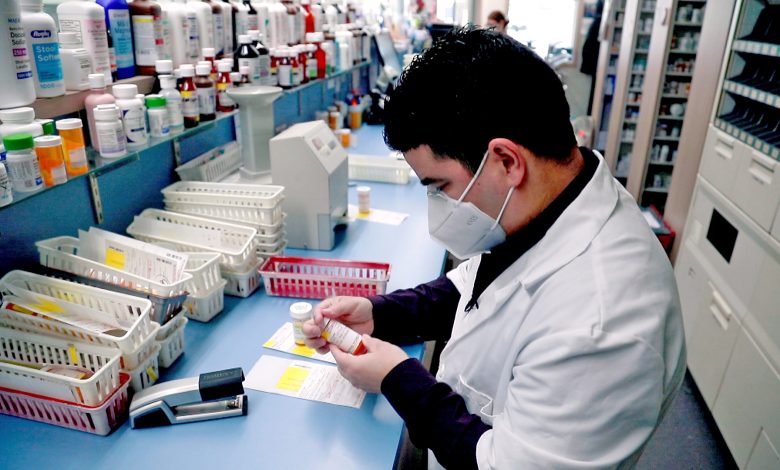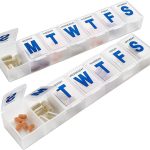7 Types Of Medication Lockers

What is a medication locker?
Medication lockers, also known as medication cabinets or pill lockers, are secure storage units designed to store and protect medications in various settings such as hospitals, clinics, pharmacies, nursing homes, and even private residences. These lockers are used to enhance medication safety, prevent theft, and ensure proper inventory control.
The primary purpose of medication lockers is to safeguard medications, especially controlled substances and other high-risk drugs, from unauthorized access. They are equipped with robust locks or electronic systems to limit access to authorized individuals only, such as healthcare professionals or designated staff members. This helps prevent medication diversion and reduces the risk of accidental ingestion or misuse.
Medication lockers often feature different compartments or shelves to organize medications based on various criteria, such as patient name, medication type, dosage, or administration schedule. They may also incorporate barcode scanning or RFID (Radio Frequency Identification) technology to track medication inventory and improve overall medication management.
These lockers can have additional features for enhanced safety and control, such as tamper-evident seals, temperature monitoring, and alarm systems. Some medication lockers are integrated with software or digital systems that allow for real-time inventory tracking, automatic restocking notifications, and detailed usage reports.
Types of Medication Lockers
There are various types of medication lockers available, each designed to meet specific needs and requirements. Here are some common types of medication lockers:
1. Wall-mounted Medication Lockers: These lockers are mounted on walls and are often found in healthcare facilities like hospitals and clinics. They are designed to save space and provide convenient access to medications.
2. Floor-standing Medication Lockers: Floor-standing lockers are larger units that are placed on the floor. They can accommodate a larger quantity of medications and are commonly used in pharmacies, long-term care facilities, and nursing homes.
3. Automated Dispensing Cabinets: Automated dispensing cabinets, also known as ADCs or med stations, are advanced medication storage systems that use electronic technology to automate medication dispensing and inventory management. These cabinets are often integrated with software that allows for accurate tracking, user access control, and real-time inventory monitoring.
4. Controlled Substance Cabinets: Controlled substance cabinets are specifically designed to securely store and track medications with a higher potential for abuse or misuse, such as opioids and other controlled substances. They feature additional security measures, such as reinforced construction, tamper-evident seals, and restricted access controls.
5. Individual Patient Medication Lockers: In certain healthcare settings, such as hospitals or long-term care facilities, individual patient medication lockers may be used. These lockers provide a dedicated storage space for each patient’s medications, ensuring personalized care and preventing medication mix-ups.
6. Portable Medication Lockboxes: Portable medication lockboxes are compact and lightweight lockers that individuals can use to store their medications securely. These medication lockboxes are convenient for travel or for individuals who need to carry their medications with them at all times.
7. Smart Medication Lockers: Smart medication lockers are technologically advanced units that incorporate features such as electronic locks, biometric authentication, barcode scanning, and integrated software systems. They offer enhanced security, real-time inventory tracking, and customizable access controls.
It’s important to note that the availability and specific types of medication lockers may vary depending on the location, healthcare facility, or organization’s preferences.
Advantages of Medication Locker Advantages
Medication lockers offer several advantages that contribute to improved medication management, safety, and overall healthcare quality. Here are some key advantages of medication lockers:
1. Enhanced Medication Safety: Medication lockers provide a secure storage solution for medications, reducing the risk of unauthorized access, theft, or diversion. They help prevent medication errors, accidental ingestion, and the misuse of medications, particularly controlled substances.
2. Controlled Access: Medication lockers incorporate access control mechanisms, such as locks, electronic systems, or biometric authentication, ensuring that only authorized individuals can access the medications. This helps maintain strict control over medication distribution and minimizes the potential for medication-related incidents.
3. Inventory Management: Many medication lockers are equipped with advanced inventory management features. They can track medication usage, expiration dates, and quantities, allowing healthcare providers to efficiently manage stock levels, reduce waste, and ensure medication availability.
4. Organization and Efficiency: Medication lockers often have multiple compartments or shelves, enabling the organization and segregation of medications based on various criteria. This promotes efficient inventory management, easy retrieval of medications, and reduces the time spent searching for specific drugs.
5. Real-time Monitoring: Some medication lockers are integrated with software or digital systems that provide real-time monitoring and reporting. This allows healthcare providers to track medication usage patterns, identify trends, generate usage reports, and make informed decisions about medication ordering and restocking.
6. Compliance with Regulations: Medication lockers, particularly those used in healthcare facilities, help ensure compliance with regulatory standards and guidelines regarding medication security, inventory control, and patient safety. They assist in meeting requirements set by organizations like the U.S. Drug Enforcement Administration (DEA) and other regulatory bodies.
7. Patient-specific Care: Individual patient medication lockers enable personalized medication management by providing dedicated storage for each patient’s medications. This helps prevent medication mix-ups and supports a patient-centric approach to healthcare.
8. Time-saving: Medication lockers streamline the medication retrieval process, saving time for healthcare providers. They eliminate the need to manually search for medications in various storage areas, reducing the chances of errors and improving workflow efficiency.
In summary, medication lockers offer advantages such as enhanced medication safety, controlled access, efficient inventory management, real-time monitoring, regulatory compliance, patient-specific care, and time-saving benefits. These advantages contribute to a safer and more efficient medication management system in healthcare settings.





